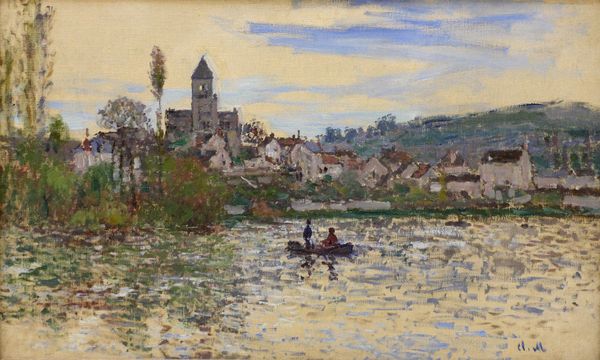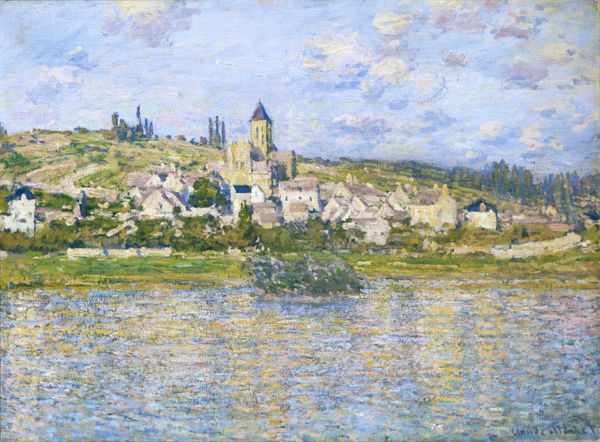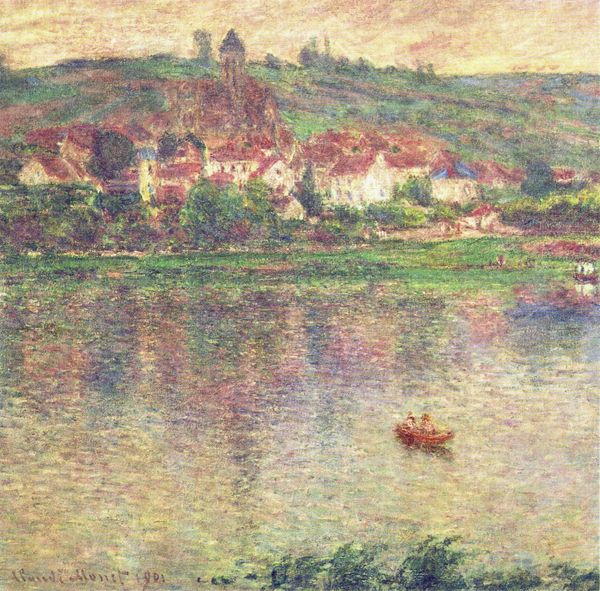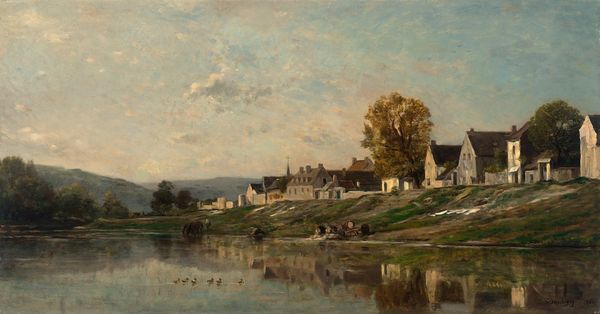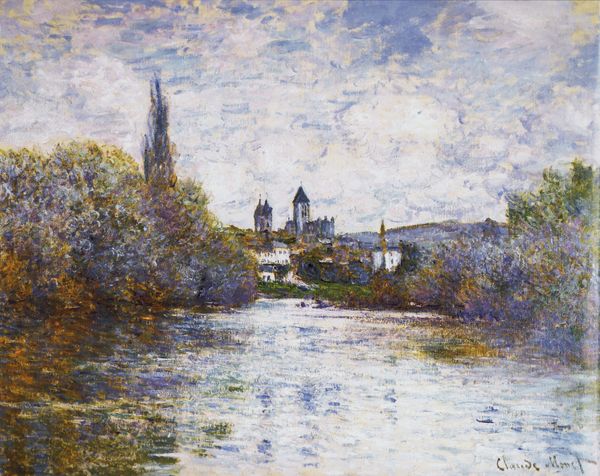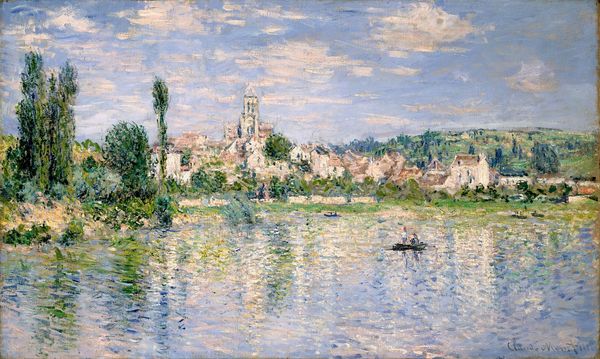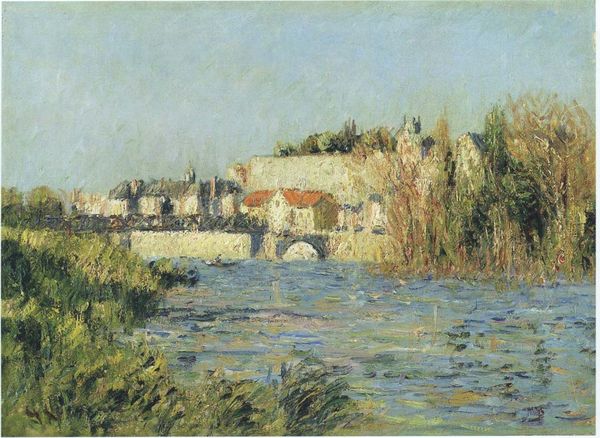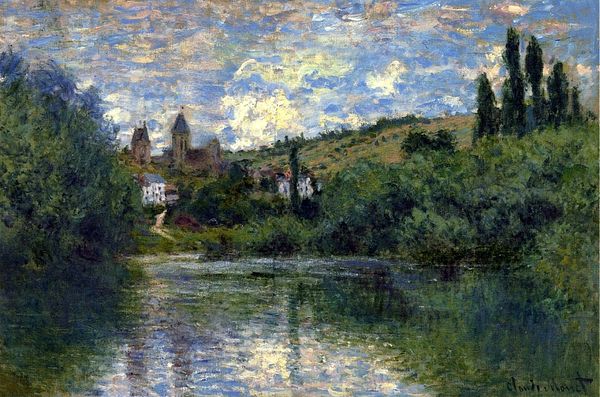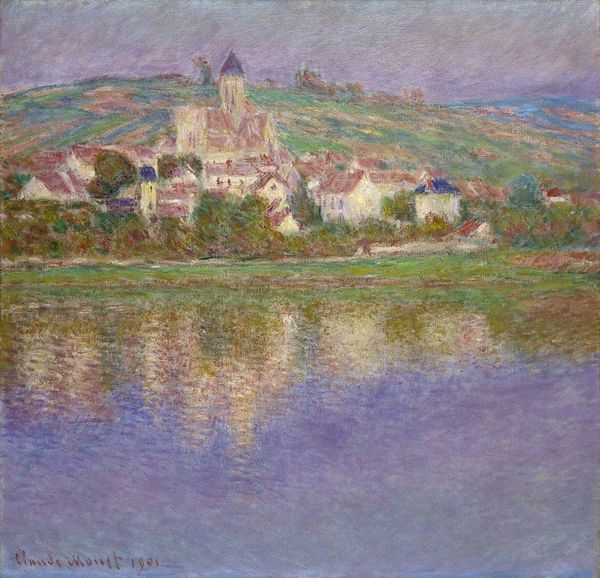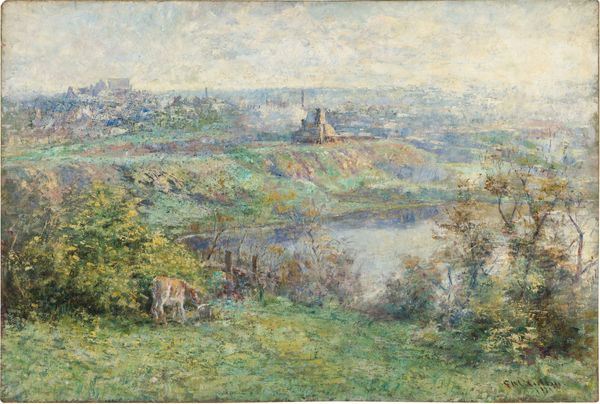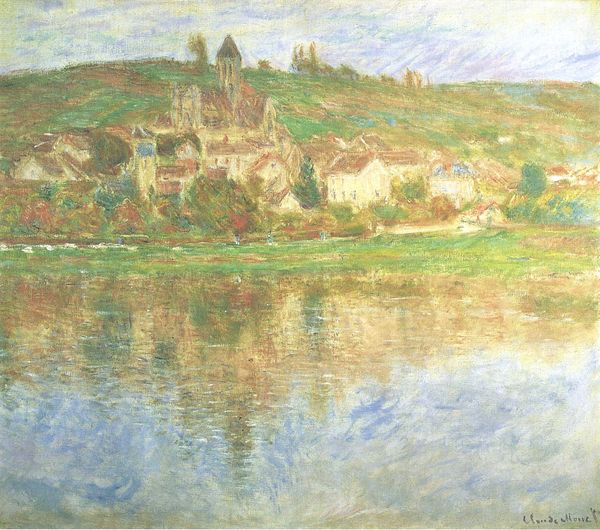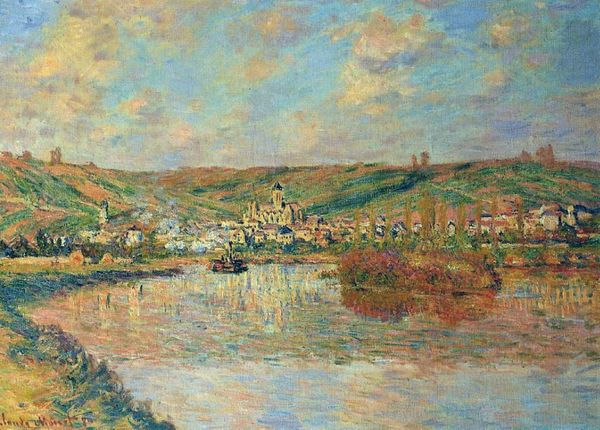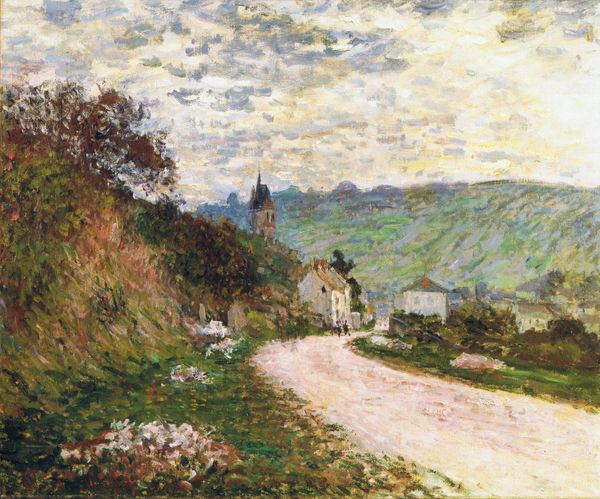
painting, plein-air, oil-paint, impasto
#
painting
#
impressionism
#
plein-air
#
oil-paint
#
landscape
#
river
#
impressionist landscape
#
oil painting
#
impasto
Copyright: Public domain
Editor: This is Claude Monet's "The Hills of Vetheuil," painted in 1880. The colors are soft, almost dreamlike, and I’m really drawn to the reflections in the water. What do you see in this piece, particularly concerning the architectural elements nestled into the hillside? Curator: The placement of the village, and especially that commanding church, resonates deeply. In many cultures, elevated structures represent a connection to the divine. Monet captures a community literally built upon this aspiration, doesn't he? The reflected imagery compounds this, suggesting an ideal, or perhaps an echo of faith throughout their daily lives. What do you notice about how Monet portrays the church in relation to the rest of the landscape? Editor: It's dominant, for sure, but not separate. It rises from the hill, almost like a natural outcropping. Is there a sense that Monet is connecting the spiritual to the landscape, embedding religion in the very fabric of their existence? Curator: Precisely. Notice how the brushstrokes used to depict the surrounding foliage are similar to those used for the church. It blurs the lines between the sacred and the secular, suggesting a unified cultural identity shaped by their environment and their beliefs. This mirrors a common thread through centuries of art: utilizing structures to convey collective values. It asks, how much of our surroundings—natural and constructed—define our identity? Editor: That's a fascinating connection. I hadn’t considered the buildings themselves as symbols before. It really shifts how I understand the whole painting. Curator: Indeed. It reveals how seemingly simple landscapes are so often rich with encoded cultural memory.
Comments
No comments
Be the first to comment and join the conversation on the ultimate creative platform.
